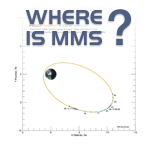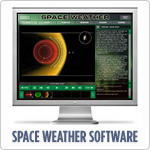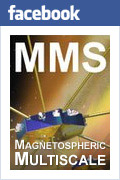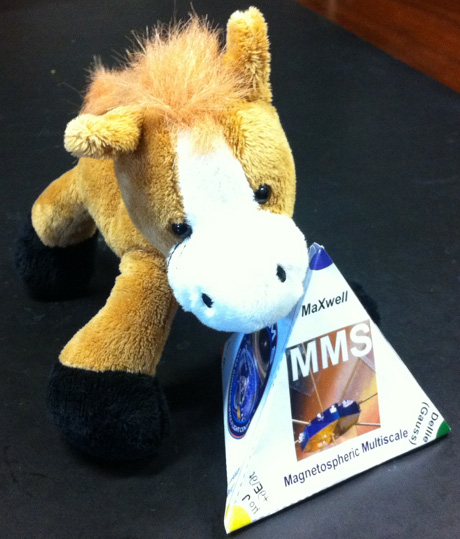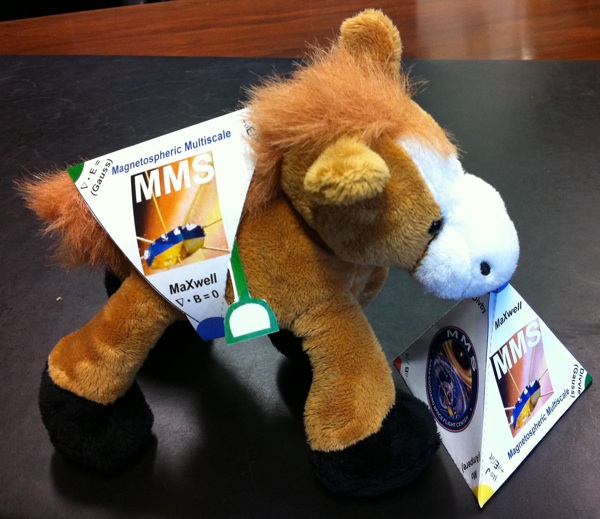Tetrahedrons and Triggers
The MMS (Magnetospheric Multiscale) mission is composed of four spacecraft that will fly in a "tetrahedron" formation. This allows the group to measure electrical currents, flows and magnetic fields when flying through places where energy is changed from magnetic field energy to electric and flow energy, or back. This process is called "magnetic reconnection" and is fundamental to understanding many things in our universe. A tetrahedron is a regular solid (like a pyramid) with four vertices (points), and four sides. Each side, called a face, is an equilateral triangle.
Download the PDF model of a tetrahedron of the MMS mission, with Maxwell's equations around each vertex. Just print out the PDF, cut on the solid lines, fold on the dotted lines, glue the tabs, and make a tetrahedron! The pattern also gives you information about Maxwell's equations, and silly names to help you remember them - Divvy, Divby, Curly and Mo! The names may be silly but the equations are not... these are the fundamental equations of electromagnetism, and only by flying in a tetrahedron can the four spacecraft, working together, solve those equations! All the equations have terms which are the differences between the values of one measured quantity at one location with the same quantity at a different location, and by having the spacecraft separated, we can measure all those differences at the same time! Check out our page on Maxwell's equations - it's their 150th anniversary!
"Trigger" is very important for the MMS mission... he helps us find out which are the very most interesting data to bring down from space to analyze. The four spacecraft take a lot more data than we can send down (by radio) from space, so for most of the time in orbit, the spacecraft just saves averaged data. But when the measured data change rapidly, it means we are crossing through something interesting, either a boundary, or a place where magnetic reconnection happens. Since the purpose of MMS is to study reconnection, we want to bring down all the data we can for those special times. The spacecraft talk to each other and say "save this data!". Then each orbit, when the spacecraft passes over the radio telescope, the most interesting and valuable data are sent down for further study (plus the averaged data for the whole orbit).
Trigger loves triangles and tetrahedrons! Click here to Download a pattern for a tetrahedral saddle for Trigger to wear! (It also gives information about the trigger process and why triggers are so important for the MMS mission).
The pages are provided by the NASA Magnetospheric Multiscale Mission through the Rice Space Institute. They may be freely copied for educational use, provided this credit is maintained.
To watch some videos describing the MMS mission and how magnetic reconnection works, go to our Educational Videos page or to our NASAMMS YouTube Channel.
For more information, email (MMS @ rice.edu).
